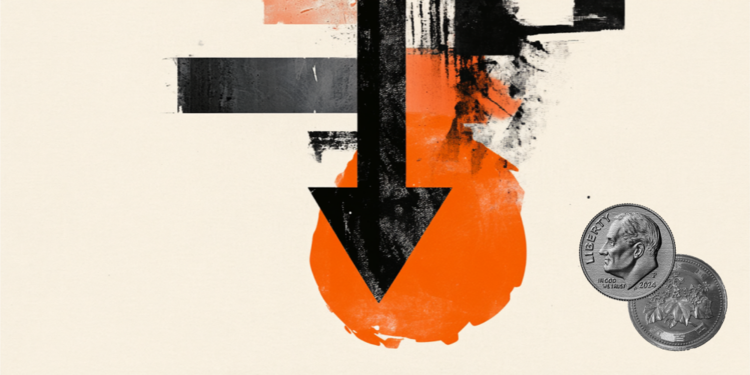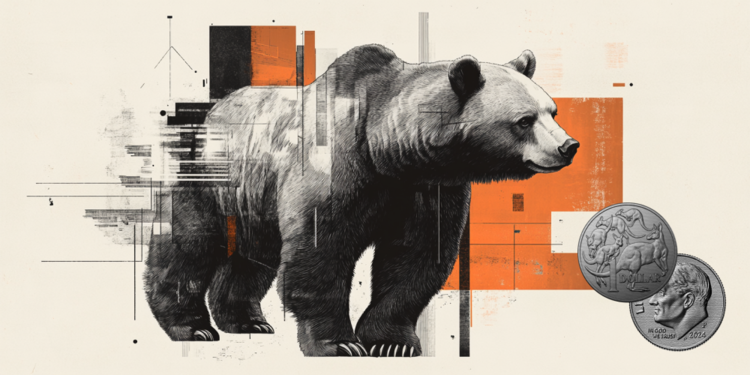- The USD/CAD seems vulnerable about 1,4350 while the US dollar quotes down before the FED policy on Wednesday.
- The Fed has almost certain that it will maintain stable interest rates in the range of 4.25%-4.50%.
- Investors expect the US retail sales data and the Canadian IPC for February.
The USD/CAD pair fights to gain ground about the minimum of three days of 1,4360 at European negotiation hours on Monday. The Loonie pair quotes with caution while the US dollar (USD) faces saleswoman before the Federal Reserve monetary policy (FED) on Wednesday. The dollar index (DXY), which tracks the value of the dollar against six main currencies, quotes down about 103.55.
Investors expect the Fed to maintain stable interest rates in the range of 4.25% -4.50% per second time. Fed officials have been guiding that interest rates should remain at their current levels until they obtain clarity about the new economic policies of US President Donald Trump.
In today’s session, investors will focus on US retail sales data for February, which will be published at 12:30 GMT. It is estimated that monthly retail data, a key measure of consumer spending, have grown 0.75 after contracting 0.9% in January.
Meanwhile, the Canadian dollar (CAD) will be influenced by consumer price index (CPI) for February, which will be published on Tuesday. It is estimated that the general CPI has grown 2.1% in 12 months until February, faster than the 1.9% increase observed in January. An acceleration in price pressures will reduce the risks of inflation remaining persistently low.
The USD/CAD is maintained above the exponential (EMA) mobile average of 100 periods, which is around 1,4220, which suggests that the general trend is upward.
The relative force index (RSI) of 14 periods ranges in the range of 40.00-60.00, which suggests a lateral trend.
From now on, an upward movement above the maximum of March 10, 1,4470 will open the door to the psychological resistance of 1,4500 and the maximum of January 30, 1,4595.
On the contrary, a downward break below the minimum of February 14, 1,4151 by the PAR would expose it to a minimum of December 9, 1,4094, followed by the minimum of December 6, 1,4020.
USD/CAD DAILY GRAPH
US dollar FAQS
The US dollar (USD) is the official currency of the United States of America, and the “de facto” currency of a significant number of other countries where it is in circulation along with local tickets. According to data from 2022, it is the most negotiated currency in the world, with more than 88% of all global currency change operations, which is equivalent to an average of 6.6 billion dollars in daily transactions. After World War II, the USD took over the pound sterling as a world reserve currency.
The most important individual factor that influences the value of the US dollar is monetary policy, which is determined by the Federal Reserve (FED). The Fed has two mandates: to achieve price stability (control inflation) and promote full employment. Its main tool to achieve these two objectives is to adjust interest rates. When prices rise too quickly and inflation exceeds the 2% objective set by the Fed, it rises the types, which favors the price of the dollar. When inflation falls below 2% or the unemployment rate is too high, the Fed can lower interest rates, which weighs on the dollar.
In extreme situations, the Federal Reserve can also print more dollars and promulgate quantitative flexibility (QE). The QE is the process by which the Fed substantially increases the flow of credit in a stuck financial system. It is an unconventional policy measure that is used when the credit has been exhausted because banks do not lend each other (for fear of the default of the counterparts). It is the last resort when it is unlikely that a simple decrease in interest rates will achieve the necessary result. It was the weapon chosen by the Fed to combat the contraction of the credit that occurred during the great financial crisis of 2008. It is that the Fed prints more dollars and uses them to buy bonds of the US government, mainly of financial institutions. Which usually leads to a weakening of the US dollar.
The quantitative hardening (QT) is the reverse process for which the Federal Reserve stops buying bonds from financial institutions and does not reinvote the capital of the wallet values that overcome in new purchases. It is usually positive for the US dollar.
Source: Fx Street
I am Joshua Winder, a senior-level journalist and editor at World Stock Market. I specialize in covering news related to the stock market and economic trends. With more than 8 years of experience in this field, I have become an expert in financial reporting.








